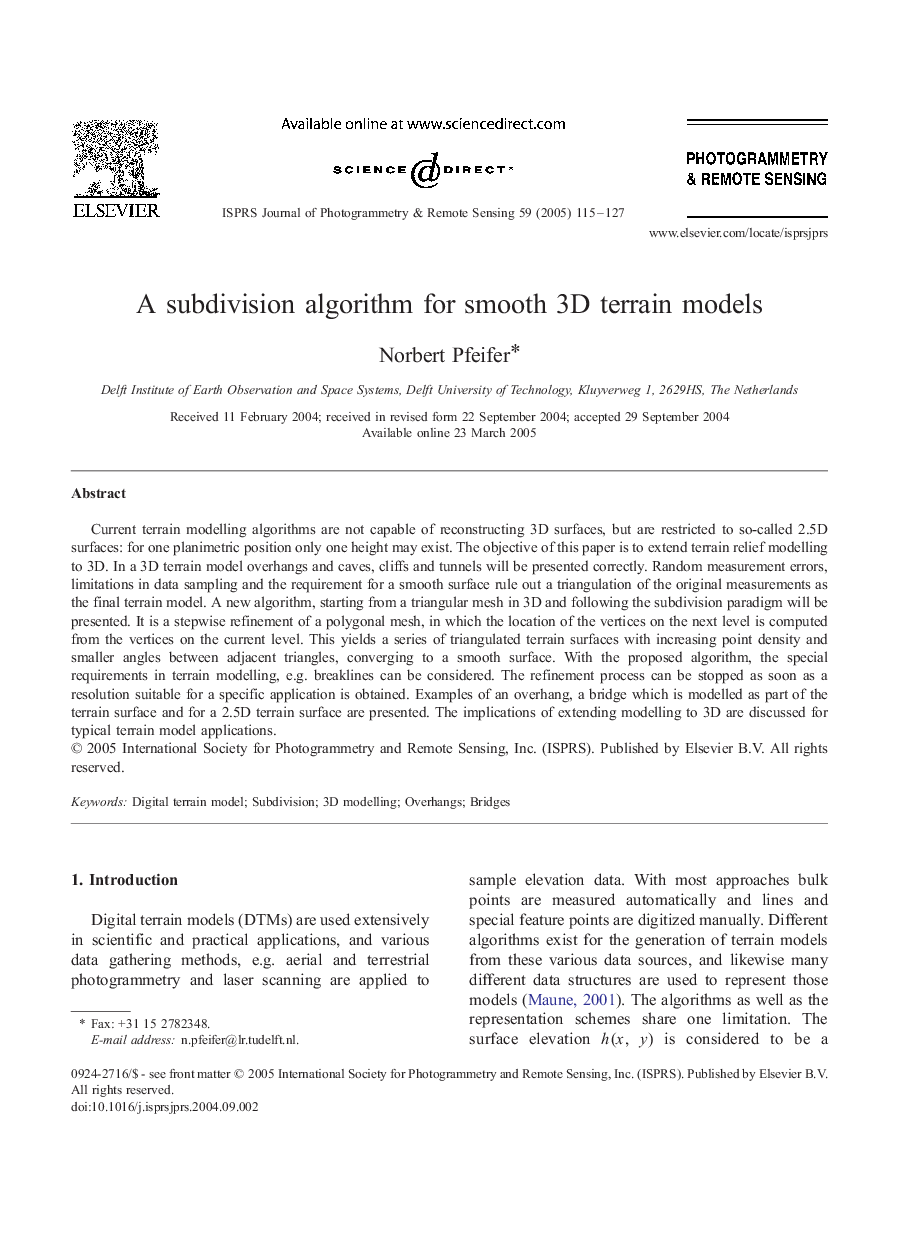| Article ID | Journal | Published Year | Pages | File Type |
|---|---|---|---|---|
| 9672903 | ISPRS Journal of Photogrammetry and Remote Sensing | 2005 | 13 Pages |
Abstract
Current terrain modelling algorithms are not capable of reconstructing 3D surfaces, but are restricted to so-called 2.5D surfaces: for one planimetric position only one height may exist. The objective of this paper is to extend terrain relief modelling to 3D. In a 3D terrain model overhangs and caves, cliffs and tunnels will be presented correctly. Random measurement errors, limitations in data sampling and the requirement for a smooth surface rule out a triangulation of the original measurements as the final terrain model. A new algorithm, starting from a triangular mesh in 3D and following the subdivision paradigm will be presented. It is a stepwise refinement of a polygonal mesh, in which the location of the vertices on the next level is computed from the vertices on the current level. This yields a series of triangulated terrain surfaces with increasing point density and smaller angles between adjacent triangles, converging to a smooth surface. With the proposed algorithm, the special requirements in terrain modelling, e.g. breaklines can be considered. The refinement process can be stopped as soon as a resolution suitable for a specific application is obtained. Examples of an overhang, a bridge which is modelled as part of the terrain surface and for a 2.5D terrain surface are presented. The implications of extending modelling to 3D are discussed for typical terrain model applications.
Related Topics
Physical Sciences and Engineering
Computer Science
Information Systems
Authors
Norbert Pfeifer,
